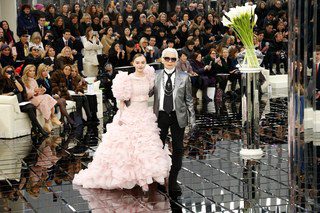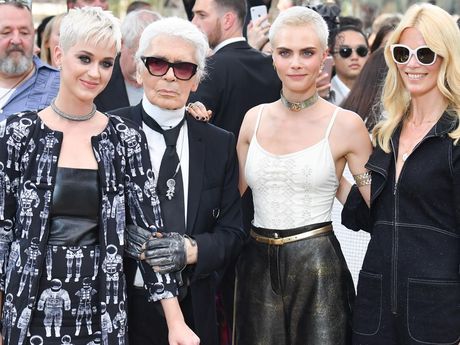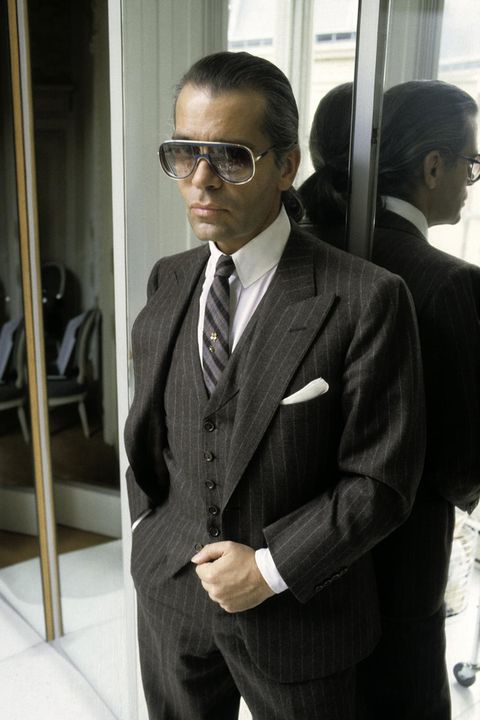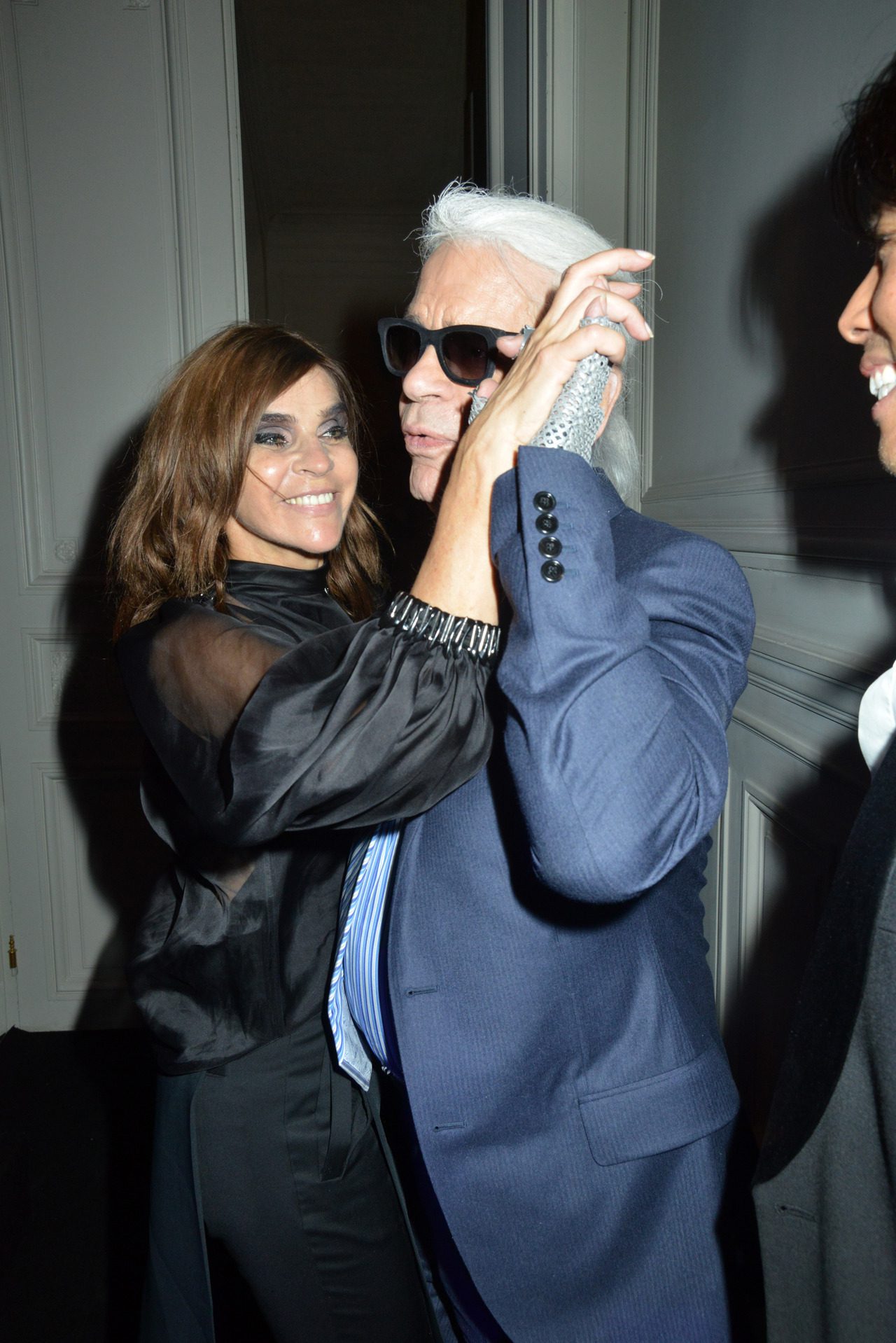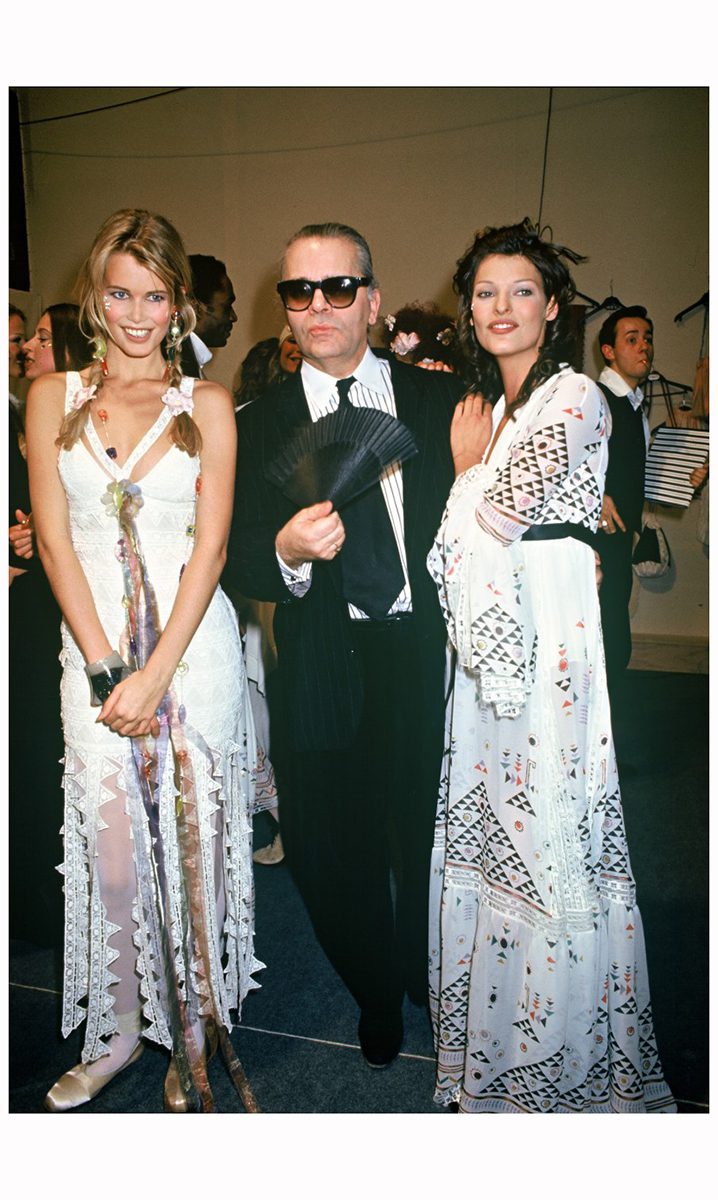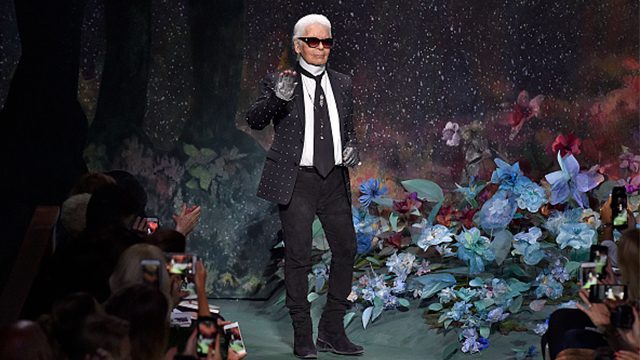
The Legacy Karl Lagerfeld Leaves Behind
This past Tuesday morning, the fashion world lost one of its greatest, most inventive masterminds in generations. Karl Lagerfeld, 85, was reported to have passed on in Paris, the universe where Chanel was built. He designed, styled – worked – tirelessly in each of his shows without displaying any evidence of declining health. It was not until the Chanel Haute Couture show at the Grand Palais this past month, the only one of his shows that Lagerfeld did not attend, that anyone could detect that there was something amiss.
Chanel announced in a recent statement that Karl Lagerfeld’s close friend and collaborator of over thirty years who walked at this recent Haute Couture in his absence, a woman of whom we often found ourselves asking, “Who is she?,”: Virginie Viard will assume the now absent role as director of Chanel’s collections. It remains unclear exactly what Viard will be doing, whether she will continue influencing the brand from the shadows, or will she move into the spotlight and carry forth the legacy Lagerfeld has left behind.
“When I took over Chanel everybody said to me, ‘Don’t touch it. It’s dead…’ And I said to myself, ‘I love that people think that. Now let’s see.'” Lagerfeld brought his prolific ideas in 1983, the year that he was hired by the arid brand, initially for couture only. In the decades that passed, his masterful reengineering of the name propelled it into an internationally sought after luxury whose revenues soared towards $9.6 billion in 2017.
Born on September 10, 1933 in Hamburg, Germany, Lagerfeld was rarely truthful about his age, nor will we ever know for sure the background of his immediate family and the logisitcs still remain up for debate. Moving to Paris in 1952 gave the designer an early start to his career, where he attended drawing school. Lagerfeld rose prolifically in the sixties, an age of fashion designer musical chairs.
Prior to coming to the Chanel house was the creative director of the Italian brand known for its Sex and the City famous baguette handbag, Fendi for over fifty years. The sixties to the nineties saw the legendary fashion idealist redefined femininity through at the French fashion house, Chloé in a way that women radiated and shone in confidence. It was by his golden vision that the brand has, up to this day, been regarded as the first ready-to-wear brand. Upon winning the Wool Bureau prize in 1958 he became chief designer at Jean Pateau and, soon began a freelance career with noteworthy brands including Fendi, Chloé, Max Mara, and Mario Valentino.
Lagerfeld’s colorful imagination, creative opinions, and sharp wisdom spread across artistic horizons in every brand that he touched from Chanel to Fendi to Chloé. As a designer who was ahead of his time, Lagerfeld’s clever intuition and blazing genius extraordinarily contributed to the success the house of Chanel has met since the courtier’s management of it. He reinvented Chanel on a carte blanche and show after show, collection after beaming collection, he traced over a path that has changed the fashion and which will not be forgotten for generations to come. On average, he designed ten collections yearly for Chanel, delighting customers in his piece-of-cake way and fresh perceptions on the new.
A fashion stunner, the designer is exceptionally known for his talents in image-making and in that, the staging of phenomenal runway shows. Some favorites that strike out to me the most include Fall 2013 Ready Wear, the epitome of an apocalyptic world straight out of Aldous Huxley’s Brave New World, Spring 2015 Ready-To-Wear in which the Grand Palais was rebuilt to stage a Parisian street scene of feminist protests, and this past Haute Couture Collection where the winter cold was immediately forgotten as thousands of spectators huddled in the Villa Chanel where a serene Mediterranean summer scene was made up, complete with palm trees, grass, and dazzling ponds. Pushing luxury to new extremes, the business innovator took fashion shows from Texas, to Cuba on a cruise and even far afield to the Great Wall of China for Fendi in 2007. He was talented at forming connections between his designs and his shows as we reminisce on Fall 2012 Ready-To-Wear when models masqueraded stalagmites of amethyst and crystals with stripes of glitter lining each of their brows, and Spring 2016 Ready-To-Wear when the Grand Palais transformed into a Chanel Airlines Terminal as models created an ambiance of chaos parading about with suitcases and handing out showcards. His shows were not only bedazzled spectacles but spoke to several of the most debatable social issues of the day including commodification, feminism, commodification as a luxury, and even the easing international relations between the U.S. and Cuba.
As a business mogul, but also as a public figure opposed to smoking, drinking, and partying, preferring solitude, he led the namesake brand to a number of collaborations, teaming with consumerist brands such as H&M in 2004, a history-making partnership that lead to the collection being immediately sold out. On the subject of becoming almost an overnight celebrity during an interview back in 2015 Lagerfeld reflected upon his younger self, “It’s unbelievable, I don’t know how it happened – it’s so strange, this fame thing. But as my fortune-teller told me when I was young, she said: ‘For you, it will really start when it’s finished for the others.’ It’s quite true.”
Lagerfeld’s ambition and awe-inspiring drive can be contributed to by his healthy, drug free life, a contradiction to many other designers who have flaunted their wealth, fame, and talent in elaborate after parties and hallucinogen vibes. His ceaseless energy and stargazing reputation has led to Chanel being seen as a brand of effortless ease and nonchalant development. In 2000 Lagerfeld is quoted to have said, “If you suffer in doing things, you shouldn’t let people know. People won’t buy your clothes because you suffered. Clothes are there to make people happy and to improve things, if they need it.” In the few events that he hosted he offered lavish amounts of wine and did what he could to take a step back in time to an era before smoking bans, cell phones, and political correctness which, according to the mastermind himself, had destroyed the art of raw communication and face-to-face conversation.
Surrounding himself with young minds and voracious talent from models, to writers, to Oscar-winning actors, Lagerfeld had an avant-garde mind and a voraciousness that cannot be easily matched. His eclectic aesthetic connected him with pop culture, always open to whatever came in the fashion’s way. His interest in the arts from literature to design can be clearly traced to his childhood passion for books and images, answering to his immense collection of over 300,000 volumes books along with a number of correspondences to numerous sources around the world – friends, editors, designers – with whom he shared his enveloping loves. Up to his death, he stayed up to date in trends and made them himself, always making an appearance at the finale of his shows or at art exhibitions clad in the utmost refined regard with a powdered white pony tale, laid back jeans, and a prim and pressed white shirt with a sharp, high color and sunglasses that seemed as attached to his face as that expression of repartee we often saw spread across his mouth. Most recently, he could be seen with stacks of silver rings lining his work-tinged fingers as well as fingerless leather gloves, an unnecessarily intimidating statement, as his presence in any social gathering or busy street seemed to upstage everyone else’s anyway.
Although he claimed to prefer solitude, claiming that he was “not a social person,” he often mixed with names such as Princess Carolin of Monaco, former French First Lady Bernadette Chirac, as well as Australian actress Nicole Kidman who was an early spokesperson for Chanel.
Early in the millennium, Lagerfeld stuck to a boring, yet sparky man diet of diet coke and other unmentionables in an effort to wear the narrow-cut slimming suits that were designed at the time by Hedi Slimane for Dior Homme. In the span of a mere twelve months he shed nearly 100 pounds, which led to him writing a book about the process alongside his doctor titled The Karl Lagerfeld Diet.
A figure braving the media for the brand’s name, not afraid to expose himself to the world for the sake of his work, Lagerfeld created community in remaining loyal, however stressed or tied down he was, to his supporters including small, little known, German publications that he remained grateful for for having remained faithful to him in the early years of his career. On the other hand, he never let pride nor bitterness get in the way, always extending invitations to his enemies as well; I speak specifically of Lagerfeld’s most brutal adversary, Saint Laurent. The designer’s sly and pointed persona however, left him untainted, however vicious or fierce he may have appeared at certain moments.
With a near photographic memory about fashion and it’s leading names, Lagerfeld is remembered to have quoted frequent and often from Coco Chanel, demonstrating his breezy knowledge of the brand that he has come to make a legacy out of the house. His designs made something more out of vintage tweed, timeless little black dresses, and classic pearl embellishments. He made over these iconic Chanel pieces by subverting the establishment by experimenting with extremes: A-line dresses, waist hugging gowns, full skirts, relaxed silhouettes and even motorcycle boots tucked under Victorian ballgowns back in 1994.
“Chanel is not a fantasy,” we remember Lagerfeld saying in 2003. ‘Chanel was about modernity and daily life. She started with sportswear. Of course it was the sportswear of her youth, but times have changed. If Chanel makes sportswear today, it has to be in the mood, the materials and for the sports people today. Fashion is for what people do now and not what they did in the past. I never use flea-market Chanels.’
The enduring legacy of Chanel, in all its quilts, florals, pastels, braids, reds – has been played with and its codes have made for the admiration we give to Lagerfeld today and for generations to come. His long career is overflowing with astounding production that has earned him a hallmarking reputation in the fashion industry, gaining him an impressively long list of clients including Ralph Lauren and Jeremy Scott. In the way that he has forsaken himself and his identity for the Chanel brand, Karl Lagerfeld has eclipsed designers and fashion brands, revolutionizing each period and brand he has set his silver-ring-lined finders upon. The designer’s ceaseless pursuit of heart and passion in his work, always a marvel, has not only propelled Chanel to where it is today but has made it to be the world’s biggest, names across worlds and crisscrossing boundaries without betraying the modernity, elegance, and confidence that marks Coco.
- Photo Credits: Getty Images
- Photo Credits: Getty Images



